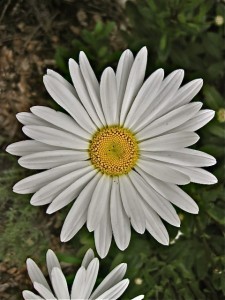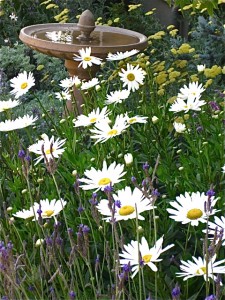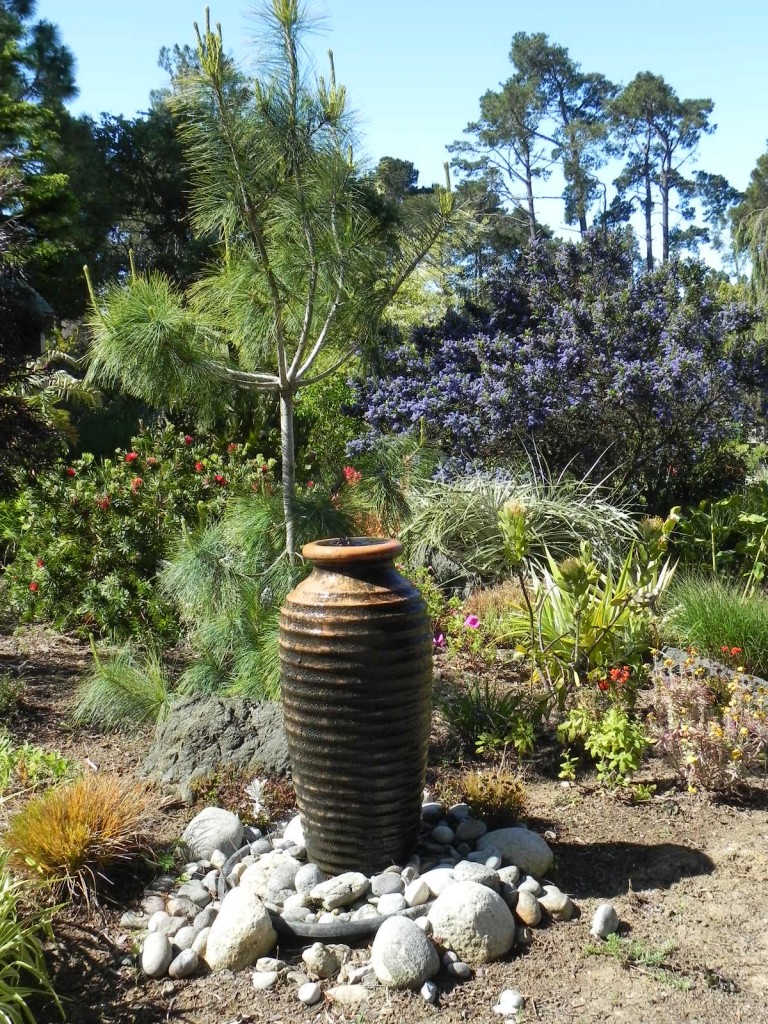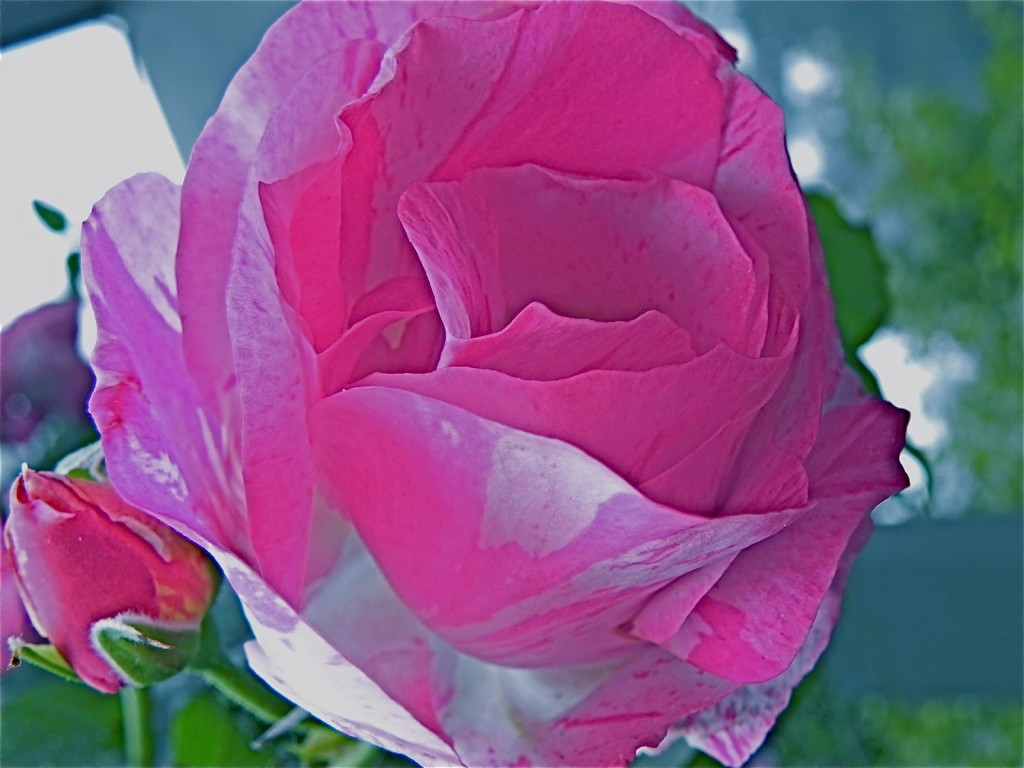
Blooming now in my front garden are the Shasta daisies (Leucanthemum maximum) that I planted during the winter. A friend was thinning out her daisies and delivered them to my house in plastic bags set by the back door.
I’d wanted to plant Shasta daisies in the front where deer browse, because I’d heard that they are utterly deer proof. And it appears they are. In the dark of the night last week, a poor surprised deer did pick a bloom from a daisy plant. It carried it to the roadside mailbox then dropped it. There it was, lying uneaten the next morning. How did I know this happened? Because I saw a deer pick a scented geranium and do the same thing. By the time the deer, with a geranium blossom hanging from its lips, got to the road, it realize that it had something it didn’t want to ingest, and left it there. Like the chrysanthemum, the daisy has an odor that some find unpleasant. The deer agree and “leave it be”.

Luther Burbank worked on developing the Shasta daisy (named for Mt. Shasta in northern California) for over 15 years. He was fond of the wild oxeye daisies that grew in front of his family home in Santa Rosa and wanted to create from them “the perfect daisy”, tall, white, having a long bloom period, and one that would perform well as a cut flower. He started with the oxeye daisy (Leucanthemum vulgare) and cross-pollinated it with the English field daisy (Leucanthemum maximum) which had larger flowers than the oxeye daisy. The best of these hybrids were then dusted with pollen from the Portuguese field daisy (Leucanthemum lacustre) and their seedlings were bred selectively for six years.
Wanting whiter, brighter flowers he took the most promising of these triple hybrids and pollinated them with the Japanese field daisy (Nipponanthemum nipponicum) and he got what he was looking for.
Shasta daisies do well on the Central Coast, best in a sunny location. They can be grown from seed but since they need to be divided every few years, it is easiest to cut young plants from the main clump and use these as new plantings. Enrich the soil before planting with compost or cow manure and plant about 12 inches apart. Keep moist until established. Shasta daisies can tolerate some drought conditions but do best with regular watering.


